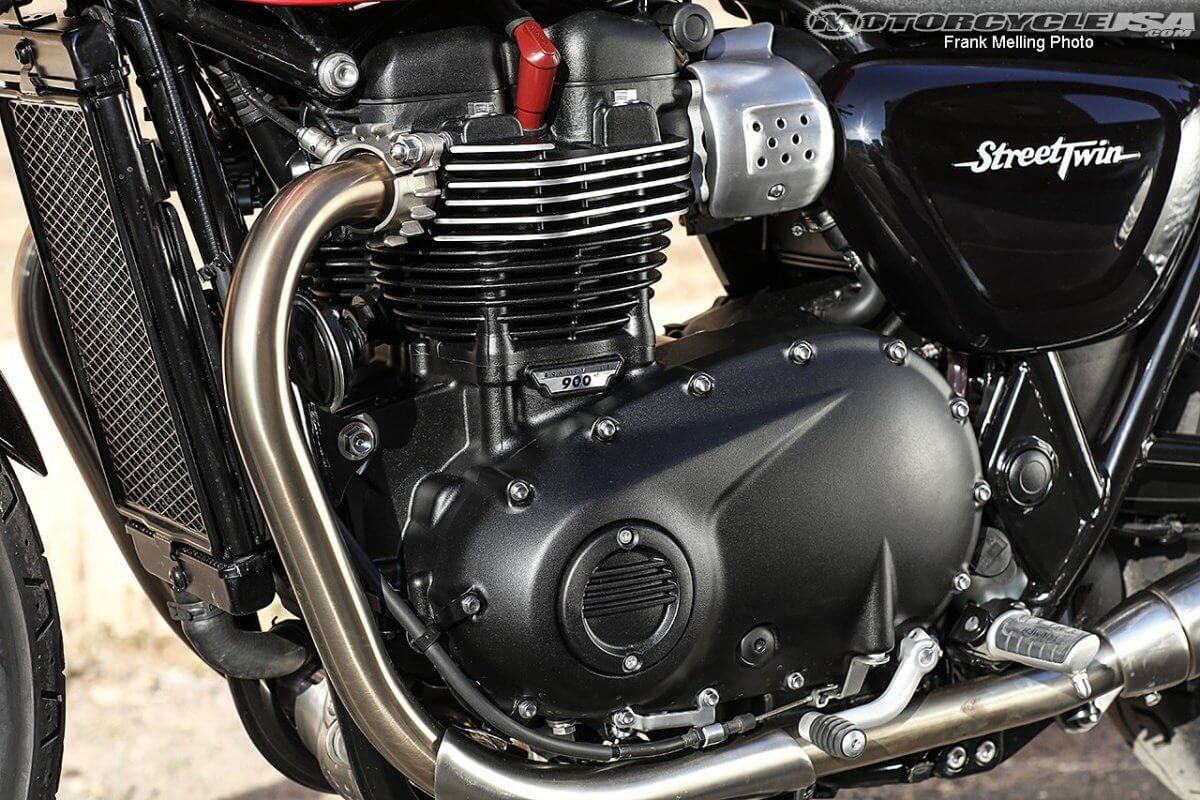Best Looking Motorcycle Engines

What’s a motorcycle without an engine? Engines are made to power the bike and non-bikers are confused by how a lump of metal could do stir up so much emotions in us, but to us they’re works of beauty. Here are ten of the best-looking motorcycle engines, in no particular order.
1. AJS 7R
The AJS 7R was a 350cc race bike built from 1948 to 1963. Commonly known as the “Boy Racer,” it won victories for both the factory and privateers from its inception.
Designed by Phil Walker, the single overhead camshaft (SOHC) was driven by a chain from the outside of the engine block, hence the tower cover.
2. HRD Vincent Black Shadow/Black Lightning
The Black Shadow and the Black Lightning race bike from which it was spawned were the fastest production bikes of their time.
The 998cc, air-cooled, pushrod, overhead valve (OHV), V-Twin on the Black Lightning was stripped down and, had stronger connecting rods, larger intake ports, polished rocker gear, steel idler gears, racing carbs and manual-advance magneto. It had a top speed of 240 km/h.
In 1948, Rollie Free attempted to break US national motorcycle speed record at the Bonneville Salt Flats. He could only reach 239.1 km/h so he stripped down to his swimming shorts for the recorded final run and hit an average of 241.905 km/h. That bike became known as the “Bathing Suit Bike.”
Only 31 Black Lightnings were ever built.
3. Britten V1000
Frustrated with the lack of parts and reliability of stock engines, New Zealander John Britten decided to do the impossible: Building his own bike and engine.
Working from his home shed with a few buddies, he came up with a creation in 1991 that not only looks radical, but went on to dominate the Battle of the Twins championship over the factory bikes.
Only ten plus the one initial bike were built.
4. Honda CBX-6
The 1978 Honda CBX1000 was Honda’s bid to reclaim the world’s fastest production bike crown which it lost to the Kawasaki Z1.
Featuring a 105 bhp, 1047cc, air-cooled, inline-Six, it hit a top speed 216 km/h. But that’s just part of the story. The 1979 CBX1000-6 blew through the ¼-mile run in 11.36 seconds, at 189.82 km/h.
The engine looks large and ungainly in the bike, but it’s only big at the top. The lower parts of the engine were made narrower to provide more ground clearance for spirited cornerning.
5. Moto Guzzi V-Twin
There’s no mistaking the Moto Guzzi V-Twin, with both cylinders sticking out the side. This transverse mounting uses the airflow to help cool cylinders and their alloy rocker covers, learned from aircraft experience, instead of having both cylinders stuffed longitudinally along the frame.
The deep, finned oil sump design has also survived to this day.
6. Ducati Singles
Fabio Taglioni adapted the desmodromic valve drive to Ducatis to combat valve float and weak valve springs at high RPM. To turn the camshaft, a tower shaft on the right side of the engine sent drive up to the camshaft’s idler gear through a bevel gear.
The result is an awesomely beautiful engine, in the purest “form follows function” sense.
7. Kawasaki W650/W800
The bevel gear lives!
Ducati’s bevel drive soon gave way to belt and finally chain drive in the interest of simplicity and weight savings, which saw the disappearance of the tower shaft and knuckle-like bevel gear cover next to the cylinder block.
But hang on, here comes the retro Kawasaki W650 and the later W800.
Such beautiful bikes deserve beautiful engines, don’t they?
8. Suzuki Square Four
The Suzuki RG500 “Gamma” was built between 1985 and 1987, directly inspired by the RGB500 Grand Prix machine which won 7 consecutive constructors titles in the 500cc class with riders such as Barry Sheene.
The 498cc, liquid-cooled, two-stroke, twin-crank, four-cylinder engine had its cylinders arranged in a square configuration, hence the common pet name of “Square Four.” All four cylinders were arranged on the same plane in the earlier versions, while the later versions saw the front two and rear two staggered for better placement in the frame and weight distribution.
And no, the pistons are not square-shaped.
9. Triumph Twin
Whether in pre-unit form or the later iterations, Edward Turner’s created an icon. From the timing cases to the angular cylinder and finning around the cylinder block, the Triumph Twin is a distinctively beautiful power unit.
The essential design has been carried forward to the current crop of Triumph modern classics, in spite of liquid-cooling.
10. Harley-Davidson V-Twin
Yes, yes, we could hear you, but how does one argue with something that has become an icon over so many decades.
Sure, there isn’t much innovation or gain in power in the Motor Company’s V-Twins, but that’s because they’re stuck in the rut of conforming to the wishes of traditionalists.
However, any way you look at it, their 45-degree V-Twin (both the Big Twin and Evolution V-Twin) forms the focal point of all Harleys (except for the V-Rod) and that’s why so many customizers still prefer the Harley V-Twin (along with the lookalikes from S&S) as the starting point of their creations.










